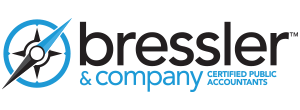A Goal Without a Plan is Simply a Wish
Goal setting is one of those techniques that we’re all aware of but largely ignore. Yet goal setting is a very successful “personal technology” that can be used to enhance any aspect of your life. By having clear goals you tend to focus better on the task at hand, persist longer in the face of obstacles, and become more productive overall. Goals also help you enlist help from others who are often important to their accomplishment.
Here are 3 quick tips that you may have forgotten to help you focus on increasing the success of your goal setting:
To-do lists are handy but can usually be done better. If your list gets too long or bogged down with little details, it can have a negative effect: you feel overwhelmed and give up the whole idea. Keep it to just a few useful items at first that are doable and important. After you get into the habit of using your basic to-do list productively, you can have categories, multiple lists, PERT charts (Program Evaluation Review Technique), and other fancier approaches.
Stick to one task at a time so that you finish things. One offshoot of this is to pick your hardest task to do first. When you don’t do this it tends to block your efforts on other tasks because you know they’re not as important. And when you do it you have the satisfaction of knowing that you’ve done the “biggest” job.
You may be familiar with the SMART guidelines for setting effective goals. While there are some variations of the system, here are the basics of it.
To be successful, your goals should be:
Specific. Vague goals make it hard to know if you’ve succeeded and are less motivating. Don’t say you want to make more money or get more business. Say you want to add $50,000 or 10 clients. Or say you want to get a certain firm as a client.
Measurable. You need a metric to know how you’re progressing and when you’ve accomplished your goal. Some goals have a way to measure them built in, such as earning a specific amount of money. Others such as doing business with a specific client will need steps detailed to tell you how you’re doing. (More on that shortly.)
Attainable. Your goal has to be realistic. For some, becoming the President of the United States may be attainable, for others, not so. You need a goal that fits your work and capacity, although it’s good to stretch for something challenging.
Relevant. R is often used for realistic, but attainable covers this well. You must feel that your goal makes sense for you or you won’t engage and be motivated. It is probably relevant to a larger goal, a step that gets you to a bigger goal.
Timed. Your goal needs a time line, a deadline. While your current goals often lead to further goals, you need an end point to push you along. An open-ended goal has no urgency. A multi-year time line is too remote for most goals. (Graduating from college is an example of an exception.) Goals that you can accomplish in days and weeks give you successes that provide energy for more goals and success.
Clearly there are many more details that could be covered. Two examples are the ability to deal with failure and obtaining social support. Achievement requires persistence and drive when you hit obstacles. Failure is never final if you keep going. As they say, if you shoot for the stars and fail, you may still hit the moon. Social support helps you in many ways, from ideas to encouragement. For any complex goal that involves many steps, you’ll need a more detailed plan as for managing any project. You may have to lay our steps and sub-goals to get you to a goal.
Set deadlines on your to-do list. This does two things. It helps you get going immediately because you’ve created mini deadlines and you know where you’re starting and it makes you want to beat your time lines so you actually finish things faster.
Reward yourself. This should be self-explanatory, but make sure you take time to celebrate completing tasks on your list. Just make sure your celebration is commensurate with the completed task.
Goal setting really works. Find a system that works for you, get started, and then develop refinements that help you work the way you are most productive.





